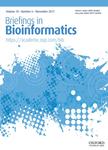版权所有:内蒙古大学图书馆 技术提供:维普资讯• 智图
内蒙古自治区呼和浩特市赛罕区大学西街235号 邮编: 010021

作者机构:Dalian Maritime Univ Informat Sci & Technol Coll 1 Linghai Rd Dalian 116026 Liaoning Peoples R China
出 版 物:《BRIEFINGS IN BIOINFORMATICS》 (Brief. Bioinform.)
年 卷 期:2025年第26卷第1期
页 面:bbae718页
核心收录:
学科分类:0710[理学-生物学] 07[理学] 09[农学]
基 金:National Natural Science Foundation of China
主 题:spatiotemporal subnetwork protein complex hypergraph embedding biological knowledge
摘 要:Identifying biologically significant protein complexes from protein-protein interaction (PPI) networks and understanding their roles are essential for elucidating protein functions, life processes, and disease mechanisms. Current methods typically rely on static PPI networks and model PPI data as pairwise relationships, which presents several limitations. Firstly, static PPI networks do not adequately represent the scopes and temporal dynamics of protein interactions. Secondly, a large amount of available biological resources have not been fully integrated. Moreover, PPIs in biological systems are not merely one-to-one relationships but involve higher order non-pairwise interactions. To alleviate these issues, we propose HGST, a multi-source biological knowledge-guided hypergraph spatiotemporal subnetwork (subnet) embedding method for identifying biologically significant protein complexes from PPI networks. HGST initially constructs spatiotemporal PPI subnets using the scopes and temporal dynamics of proteins derived from multi-source biological knowledge, treating them as dynamic networks through fine-grained spatiotemporal partitioning. The spatiotemporal subnets are then transformed into hypergraphs, which model higher order non-pairwise relationships via hypergraph embedding. Simultaneously, fine-grained amino acid sequence features and coarse-grained gene ontology attributes are introduced for multi-dimensional feature fusion. Finally, protein complexes are identified from the reweighted subnets based on fused feature representations using the core-attachment strategy. Evaluations on four real PPI datasets demonstrate that HGST achieves competitive performance. Furthermore, a series of biological analyses confirm the high biological significance of the complexes identified by HGST. The source code is available at https://***/qifen37/HGST.